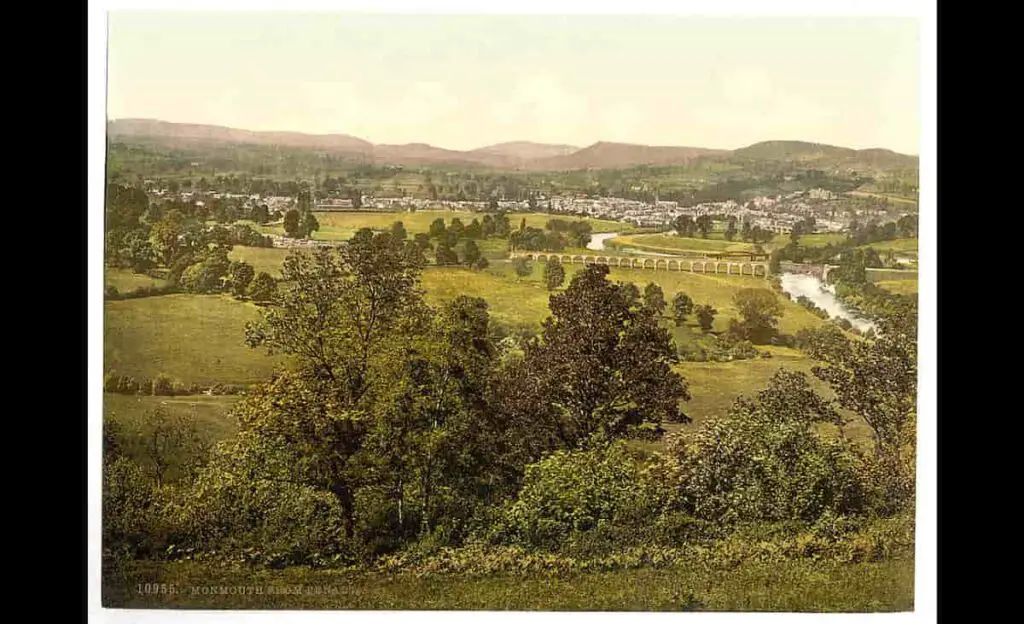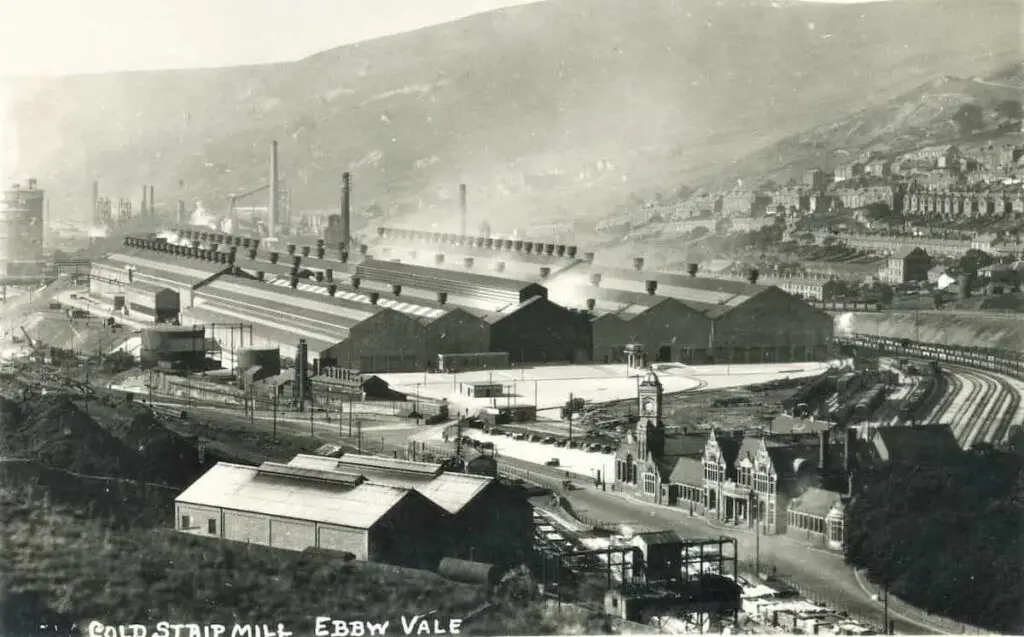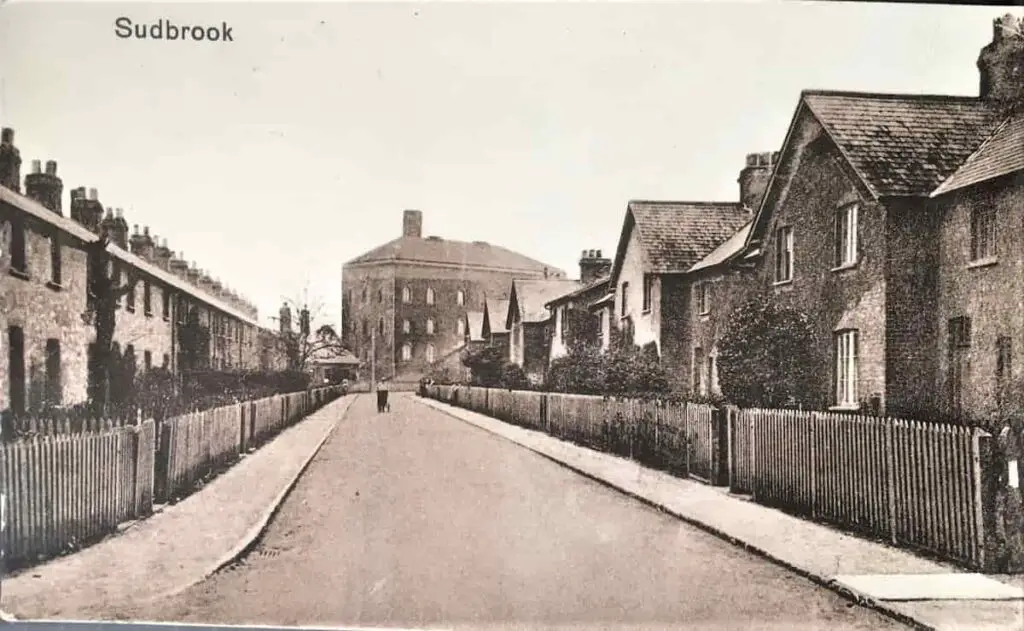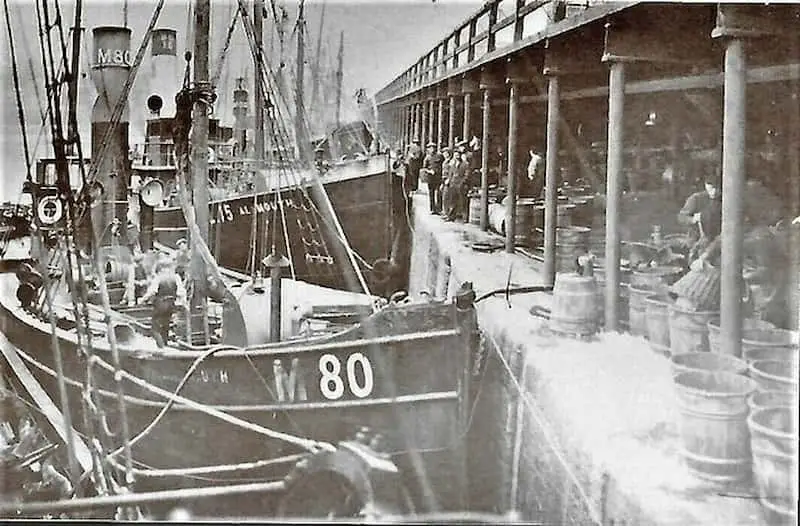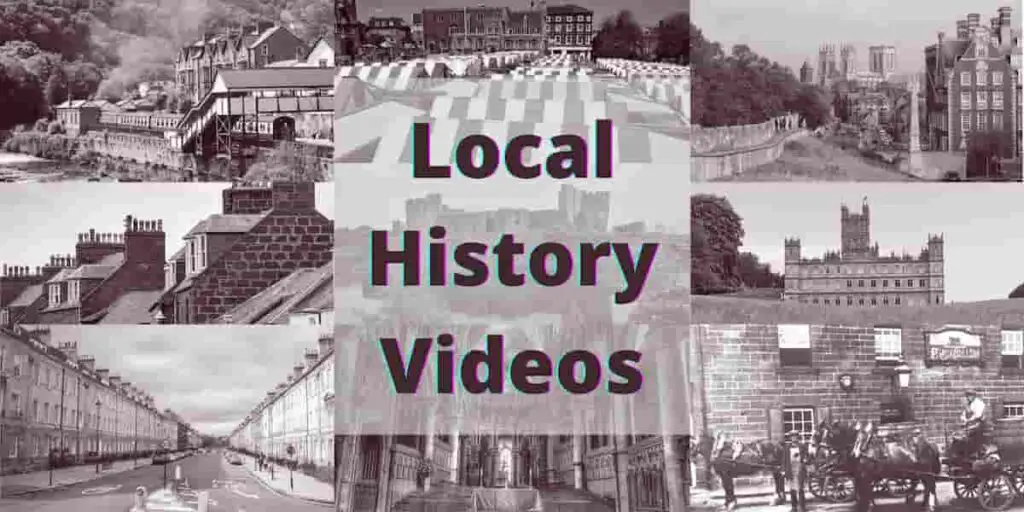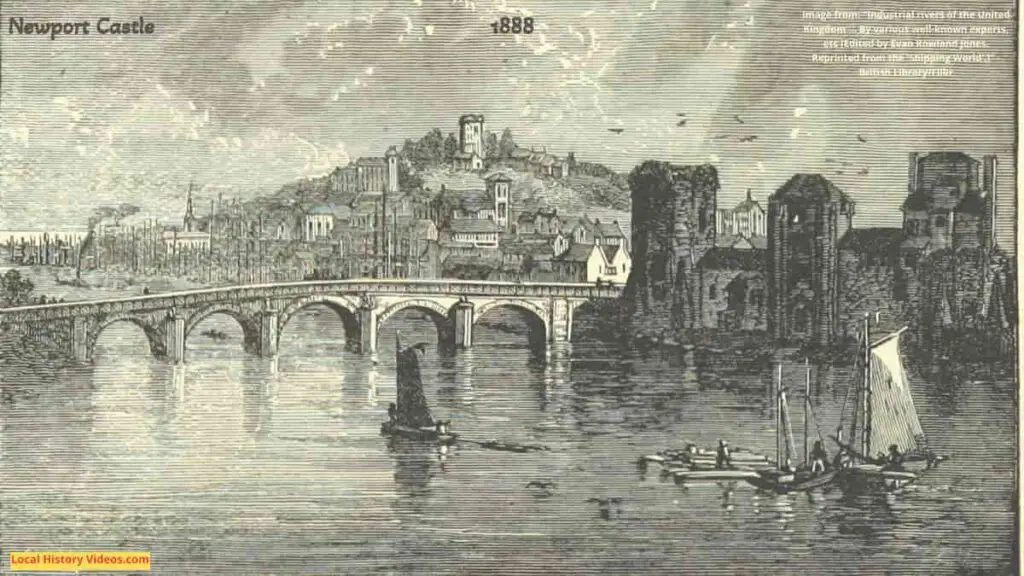Caerphilly is today famous for its medieval castle and Caerphilly cheese. But old footage shows how important mining once was to this town in South Wales.
Old Pictures Of Caerphilly
Watch a fascinating video showing well known locations around Caerphilly as they once were and are now in modern times.
This video highlights a number of locations in and around town, and showcases how they have changed over time.
The earliest photo of each location is titled, so you know where you are. If the video creator had access to photos of that location in the intervening decades, then they are included. There’s even the occasional video clip. Finally, we see the same location in 2010 or after. The date of each photo is clearly displayed on screen.
There’s a good mix between locations which are still there, and those which have been redeveloped with entirely new buildings.
The video is carefully paced. Viewers are given the right time to take in each scene, but fast enough to retain attention. The accompanying music keeps pace without being intrusive.
Many people and locations are included in this video. Even if you only know Caerphilly distantly, it’s interesting to see how things have changed over time.
Caerphilly History Video
This video is a fascinating look back at the town’s history. Major events are discussed, brought to life with a wide range of old photographs, vintage film and commentary. In addition, there are interviews with members of the older generation about their memories of the past.
Caerphilly District Miners’ Hospital
Historic photos and modern footage combine to show Caerphilly District Miners’ Hospital (Ysbyty’r Glowyr Caerffili) through its heyday and demise.
The Caerphilly District Miners’ Hospital was once a vital healthcare facility in the Welsh town for almost a century.
This video draws on a wide range of resources for its images, from books to YouTube and Facebook.
It visually charts the past history of Caerphilly District Miners’ Hospital (Ysbyty’r Glowyr Caerffili).
There are also images showing the state of the site in 2013, the future plans, the new hospital & the local reaction.
Establishing The Miners’ Hospital
Frederick Piggott, a mining contractor, moved from Lancashire to Caerphilly in the 1890s. He owned a large house called The Beeches.
In 1919, the South Wales Miners’ Federation purchased The Beeches, to establish a cottage hospital for the treatment of sick and injured miners. Over the previous two years local miners had paid a levy of one penny a week for this purpose.
With an increase in weekly levy, a fund of almost £30,000 built up to transform the house into a cottage hospital for miners working in the local pits, and their families.
The hospital employed its own nurses and domestic staff. Local GPs looked after some of the patients. Consultant surgeons, based in Cardiff and Newport hospitals, visited as required. There were X-ray and massage facilities and a busy outpatients’ department.
The first patient arrived on 2 July 1923, at which point the hospital had 32 beds. By 1930, services were expanded to 84 beds. X-ray facilities and an outpatients’ department also opened.
Although the nurses and domestic staff were employed directly by the hospital, doctors working at the hospital were either local General Practitioners, or visiting hospital medics from Cardiff or Newport.
Serving A Wider Community
When the Caerphilly District Miners’ Hospital first opened, it was solely for the use of local miners and their families. But that was to change.
UK coal production peaked in 1913 at 287 million tonnes, and then started a slow decline. In the early 1940s, the Second World War affected output badly. Between December 1943 and March 1948, young men known as “Bevin Boys” were conscripted to work in the coal mines.
Meanwhile, the wartime government required all voluntary and public hospitals to widen access to their services. Therefore, the Miners’ Hospital treated patients beyond the mining families, including civilians injured in the Luftwaffe bombing raids of London, Cardiff and Swansea.
To accommodate patient demand, the Miner’s Hospital set up additional treatment centres in the Masonic Hall, the Wesleyan Hall and the Van Hotel.
The Hospital Board purchased another large property, Redbrook House, and converted it into a home and training centre for the hospital’s nurses.
Then on 5th July 1948, the National Health Service (NHS) launched. The Miner’s Hospital became part of the state healthcare system, offering free treatment to all local residents who needed it. The wards were named after local collieries.
In the 1950s, the hospital opened a maternity unit.
The BBC TV film crews arrived at the hospital in 2006 and 2007, to record scenes for hit show Dr Who.
The End Of The Miners’ Hospital
After services transferred to Ysbyty Ystrad Fawr at Ystrad Mynach, the Caerphilly District Miners’ Hospital closed in November 2011. The site lay empty for several years.
Eventually, the main hospital building was converted into a community centre. The rest of the site was redeveloped for housing.
Meanwhile, patient services moved to the new Ysbyty Ystrad Fawr in Ystrad Mynach.
Coal Mining Near Caerphilly In The 1920s
1920s footage from Senghenydd near Caerphilly in Wales shows difficult living conditions for the South Wales miners and their families.
This fascinating 1920s footage was recorded at Senghenydd, four miles northwest of Caerphilly. It gives a glimpse into the lives of Welsh coal miners and their families.
The film shows both above-ground industrial sites connected to the mining activity, as well as the terrible living conditions in which the miners, their wives and children survived.
Coal trucks heavily loaded with cargo show the scale of the operation at the mine.
The tiny cottages look out directly onto the closeby industrial buildings, which dominate the landscape.
There are no clean pavements and neat gardens. Instead, the ground everywhere consists of wet mud. The areas behind the cottages are surrounded by sheets of corrugated tin, which must have looked as ugly from inside the cottages as they looked from the fields.
We see young men on horses, and one man outside the cottages has a bicycle. There are no cars anywhere, which is a striking difference from city footage of the same era.
Finally, we see a street scene that looks more acceptable to live in. Again, there are no motor vehicles to be seen anywhere, but a lot of men on the street.
Miners In Senghenydd, Wales (1920-1929): British Pathé
The South Wales Coalfield Crisis in the 1920s
The 1920s was a time of deep economic crisis for the coalfields of South Wales and the families which depended on this industry for their livelihood and home.
This footage can be a bit confusing as it jumps from one location or event to another, because it’s not accompanied by a commentary.
However, you get to see the large turnout of men in the streets at this time of industrial crisis.
Crisis In The South Wales Coalfield
The ‘roaring twenties’ were not fun in most parts of the UK. Families worked hard for humble living conditions and if anything went wrong it could spell catastrophe for everyone.
Then demand for British coal decreased thanks to increased coal production elsewhere, the change to oil, the high exchange rate of sterling, the capture of South American markets by the United States, the unmodernised character of British production methods and the loss of European markets because Germany was paying reparations in coal.
Unemployment among British coal miners rose from 2% in April 1924 to 12.5% in January 1925 and to 28.5% in August. The loss of work meant eviction of the whole family from the tied home, and only parsimonious benefits provided by the state.
Miners who remained in work were asked to take pay cuts, which they could ill afford.
South Wales was badly hit by these events because the coal industry was such a major source of income for the local population and businesses.
Then in 1929 the Wall Street Crash caused wider economic woes and wide scale unemployment.
By 1932, when unemployment among Welsh insured males reached 42.8%, Wales was among the world’s most depressed countries.
“The depression halted and reversed the industrial growth which had been in full flow for 150 years. It caused massive emigration: Wales lost 390,000 people between 1925 and 1939, and its population did not regain its 1925 level until 1973.”
BBC
A New Hypermarket In The 1970s
Wales got its first hypermarket in 1972, when Carrefour opened in Caerphilly. A report by Gaynor Thomas is both amusing and enlightening.
Carrefour Opens In Caerphilly
In 1972 saw the opening of the first hypermarket in Wales, at Caerphilly. Carrefour offered a shopping experience like no other seen in the country before, and with 960 car parking spaces too.
Across the UK many towns were still to open a moderate sized supermarket, and those that did focussed on groceries. So the idea of one building containing a very large supermarket alongside clothes, furniture, hardware, refrigerators, and TV sets, along with a snack bar and restaurants, was extraordinary.
Even the fact that this was all self-service was worthy of comment.
Not surprisingly, shoppers were drawn from far and wide, especially as Carrefour claimed their items would be cheaper to buy.
Gaynor Thomas Reports On Town Opinion
In this report, reporter Gaynor Thomas interviewed a wide range of shoppers and local shop owners.
The report starts in the Carrefour car park, before moving to the local high street.
Gaynor buys a big basket of brown paper bags full of vegetables – though hilariously we can’t see them – for the cost of 43p. “Which I reckon is pretty good” she says.
The greengrocer, whose shop has been there 35 years, doesn’t think the hypermarket will ruin their business because their florist services do wedding bouquets and funerals too. She also can’t envisage people going down to the hypermarket mid week just to pick up a cauliflower and a couple of potatoes either, showing that daily grocery shopping was still very much part of normal activity then.
One lady thought people coming from other towns would go to places such as Woolworths and the market first before going down to the hypermarket, so thought everyone would co-exist.
Next we’re shown a basket of goods that are apparently usual for a weekly shop. Included are washing up flakes and lard.
The managers of the largest grocery shop in Caerphilly believed the hypermarket wouldn’t dent business long term, because a larger store couldn’t offer the personal service of the high street stores.
Gaynor then holds a big box full of the weekly shop items, and tells us it came to exactly £5.
Gaynor Shops At Carrefour
The next day Gaynor Thomas goes into Carrefour to see if she can buy exactly the same goods and get any change from £5.
You have never seen anyone look so happy to be shopping – though it quickly turns to a big sigh.
One customer tells Gaynor she came with friends but hasn’t seen them since walking through the doors, because the place is so big, and now she’s got to try and find them.
A very well spoken woman says she has been to France so is familiar with the set up, reminding us that Britain was slow in adopting this style of shopping. However, she’s frustrated that everyone insists on taking their trolleys to the counter, instead of leaving them parked nearby for a couple of minutes.
A man is buying something for his daughter’s transistor set. Elsewhere it costs 14p, but the price at Carrefour is 11p. “Well, that’s a 3 pence save isn’t it?” says the happy bargain hunter.
Getting To The Checkout
Gaynor has to literally crash an abandoned shopping trolley out of her way to get to the checkout. The TV cameras were in the building and no one thought to clear empty trolleys away from the till aisle.
By this time, she’s shopping with gritted teeth.
The final price at the till for a week’s shopping? £4.64 and a half pence.
But she’s so fed up with walking a long distance, it doesn’t sound like she’ll be coming back for more bargains anytime soon. And it’s worth noting that the shopping trolleys seen in the background are almost empty compared to what people buy in their local supermarket today.
The Railway Station
Robert Masterman’s video about Caerphilly railway station displays black and white photos from the 1960s and then shows the 2013 new platform work in progress.
Caerphilly railway station is situated a few miles north of Cardiff, on the Rhymney Valley line.
In the 1960s this was a busy location, in part thanks to the large Locomotive works located on the south side of the station. In addition, the freight line from the Rhondda Valley via Penrhos Junction passed through the station.
When Robert Masterman created this video in 2013, much had changed. The freight and locomotive works were long gone, but in response to increasing passenger service numbers a new bay platform was being installed.
So he assembled a collection of 1960s black and white photos showing how the station used to look, and showcased them between photos and video clips taken in 2013.
A few local people and homes appear in the background, along with the workmen.
Useful titles and additional information appear too, identifying the location and year on screen.
Caerphilly Railway Station in 2004
See the railway station in operation in 2004 as dozens of passengers disembark from a train and head home.
This is a quick look back at Caerphilly railway station in operation in 2004, when dozens of passengers disembarked from the train.
This video shows a couple of minutes of activity at Caerphilly railway station in 2004.
This video is of interest to rail enthusiasts. In addition, dozens of passengers appear in the second half of the video. They disembark from the train and then walk or cycle along in one of two directions. Perhaps you recognise someone?
Class 37 402 og 37 417 i Caerphilly 2004: Henrikrail
Discover More About Caerphilly’s Local History
More than 10,000 already follow the Facebook page Caerphilly Local History.
You may also be interested in some of the resources listed on our Caerphilly County Borough: Local History Resources page. If a useful resource is missed and should be added for the benefit of Local History Videos readers, please do get in touch.
Wales
- Old Images of Monmouth, Wales
- Old Images of Blaenau Gwent, Wales
- Old Images of Monmouthshire, Wales
- Old Images of Pembrokeshire, Wales
- Old Images of Llanybydder, Wales
- Old Images of Newport Castle, Wales
.
Discover more locations in our Sitemap for Wales.


